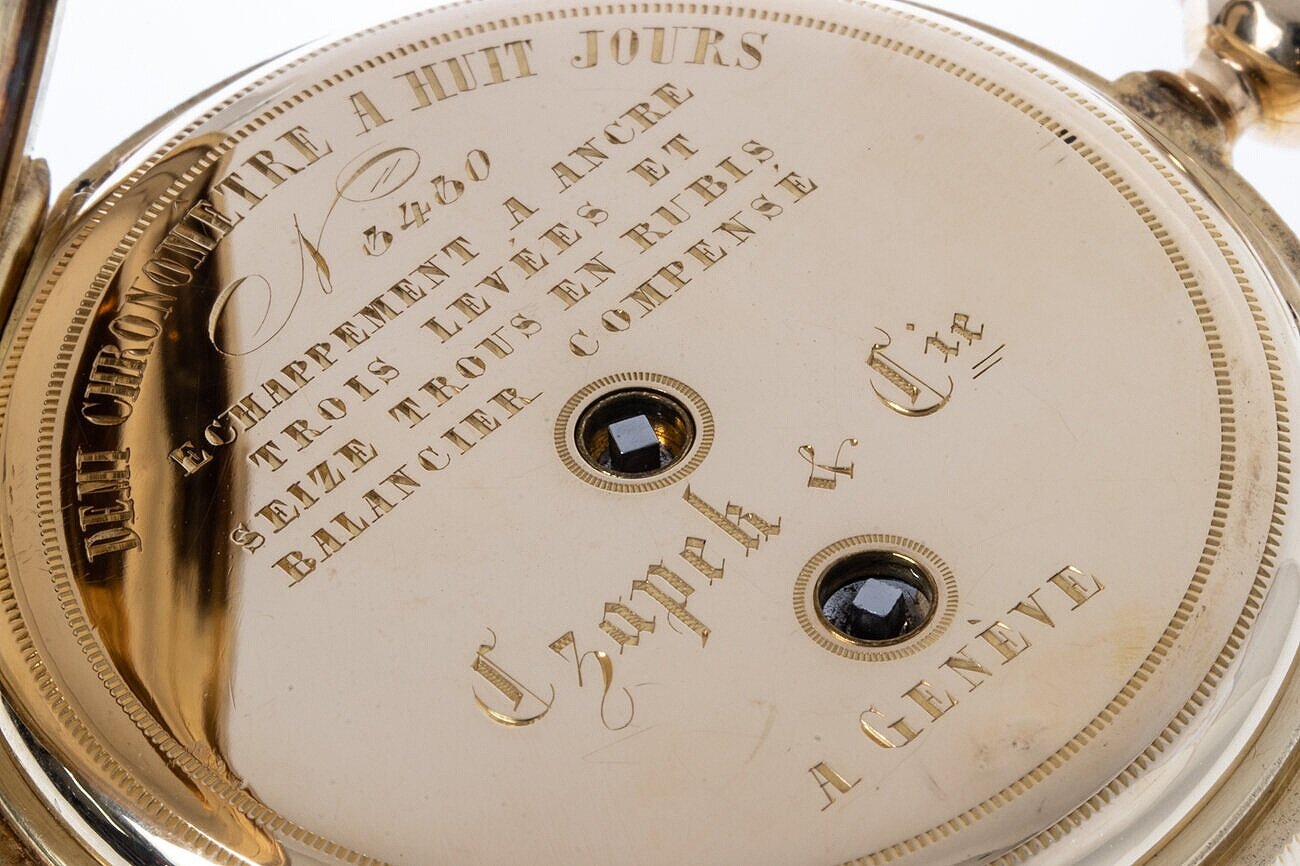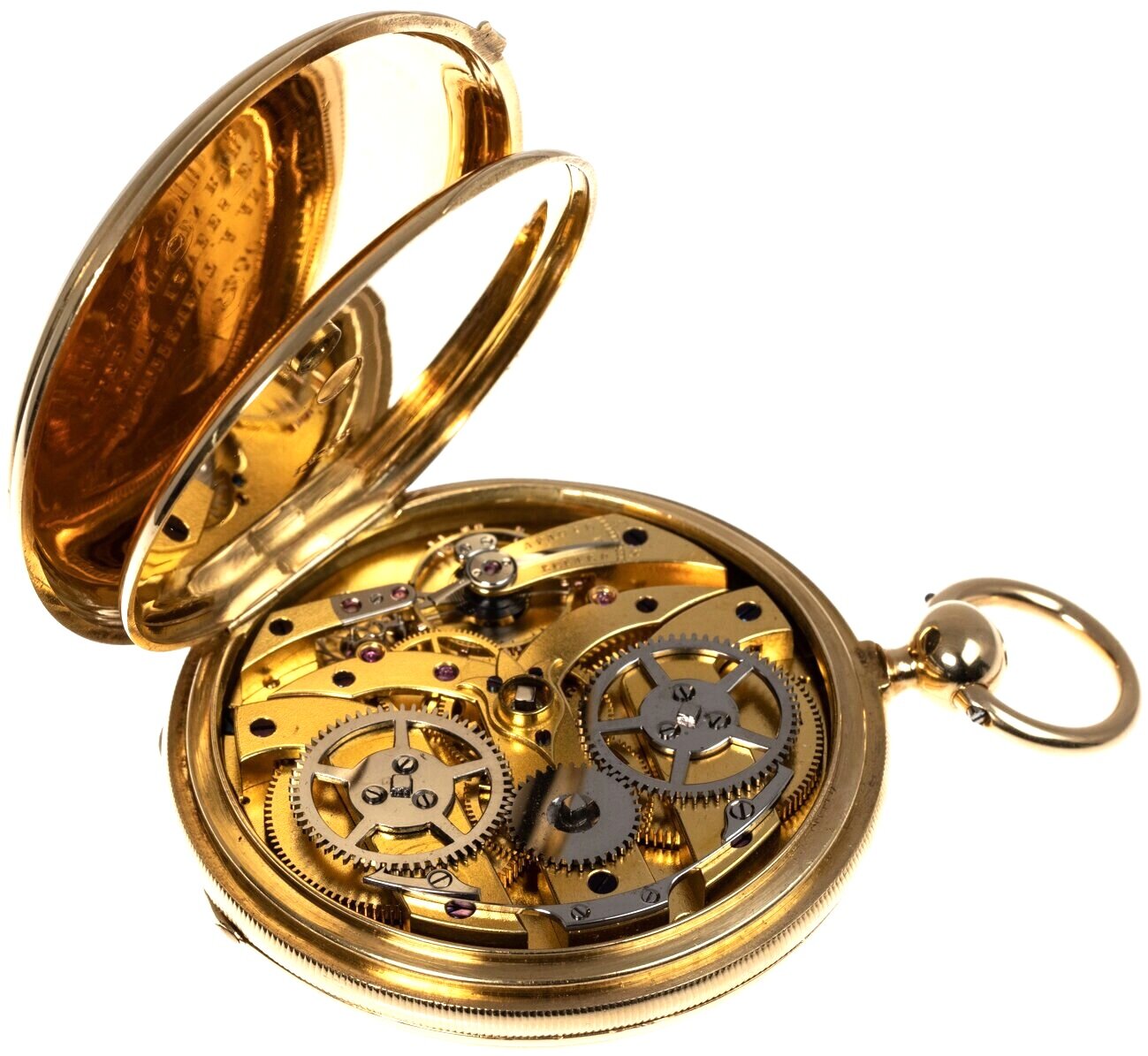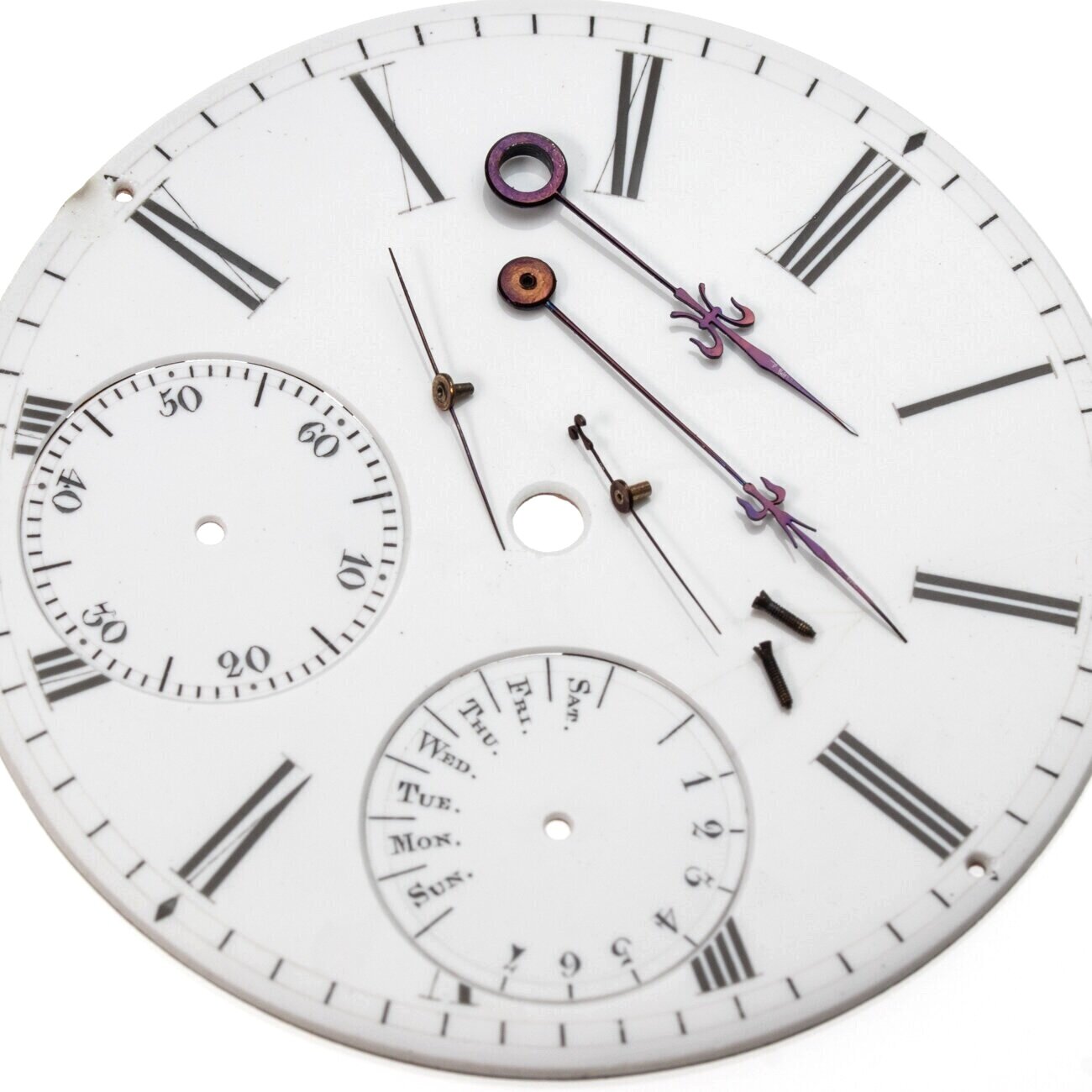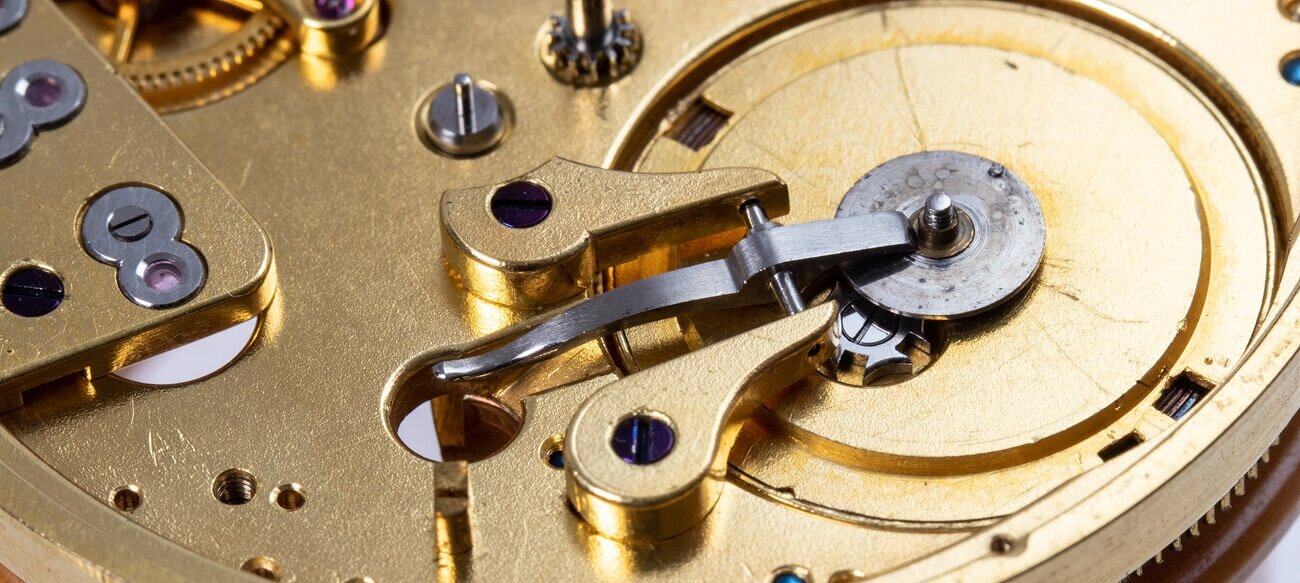(An abridged history courtesy of Xavier de Roquemaurel)
Czapek & Cie is a manufacturer of Swiss watches originally founded in 1845, in Geneva. It was known for its bespoke timepieces manufactured for the European Nobility in the 19th century.
Franciszek Czapek was a Czech-born and became a Polish master watchmaker who arrived in Geneva, Switzerland in May 1832. Approximately in 1833-34 he developed the firm Czapek & Moreau with local Swiss watchmaker Moreau, from Versoix. (When Franciszek fled to Switzerland following the collapse of the Polish uprising, in which he actively participated, he Gallicized his name to François.)
An 18ct gold full hunter case, opened by pressing a button set into the pendant.
Patek, Czapek & Cie. (1839-1845)
On May 1, 1839, Antoni Patek and François Czapek established a six-year partnership in Geneva under the name of Patek, Czapek & Cie.
The inner dust cover found under the case back. The central square is for setting the hands and the lower square for winding the barrels.
Czapek was head of watchmaking while Patek directed the sales and the Company. From July 1840, the firm began to employ six people, three were Poles. Roughly two hundred watches were produced each year.
The power reserve is linked with the indication of the week day, with a one day security built in, to compensate for the day of winding the watch,
When the company ended, Patek developed Patek Philippe & Co. with his new partner Adrien Philippe.
The knurling on the centre of the case was both for aesthetic purposes as well as functional.
In 1845 François Czapek founded Czapek & Cie with a new partner, Juliusz Gruzewski. They had an Atelier in Geneva, a shop in Paris, Place Vendome 23 (established 1850), and another in Warsaw (established 1854).
The inner case back opened revealing the gilded movement.
The two symmetrical ratchet wheels simultaneously wound by the central steel wheel and square, by key.
Left and right clicks.
The ratchet wheels wind anti-clockwise.
The bezel removed.
The simple complication of linking an 8 days power reserve with a 7 day power reserve indicator is unusual especially at a time when the majority of time-pieces would not exceed 2 days of power reserve, or less. Couple this with the power reserve cork screw system shown at the bottom of this page, and the result is a highly original time piece.
Recto-verso of the enamel dial.
The original blued steel hands sitting on the dial.
The rear of the dial with the enamel back shown, balancing up tensions on the copper base. The two subsidiary counters are held in place by lead solder.
The movement removed from the case.
The curved regulating index following the form of the balance cock.
The split metallic balance wheel with heavy gold timing screws.
The balance wheel removed.
Both the escape-wheel and Swiss Anchor pivots have end jewels limiting their end shake.
The escape-wheel and Swiss anchor removed from the movement.
To compensate for the weight of the rear of the anchor a second piece is held in place on the front by a screw. The circular section on the front of the anchor allows the escape-wheel to pass through. The lever is made from hardened steel, angled and polished, adjusted by hand.
Underside of the Swiss anchor.
The guard pin (at the lower end of the anchor) is also held in place by a screw.
The underside of the balance wheel.
The triangular vertical standing jewel is the impulse jewel receiving power from the Swiss anchor. The disc above it with the cut out crescent is the safety roller acting with the guard pin preventing the anchor from slipping out of synchronisation with the balance.
The movement with the balance and escapement removed.
The dial side of the movement with the dial and hands removed.
The extended pivot for the small seconds hand.
The two figure-eight steels pieces, carry end jewels limiting the end shake for the escape wheel and the anchor.
The Geneva stop-work. Limiting the number of turns of the barrel arbour, ensuring only the central part of the mainsprings are used, neither the strong final or weak early sections.
Quite often in antique pocket watches the stop-work is broken when a carbon steel mainspring inevitably breaks. Here the pieces are original and intact.
The power reserve and day indicator system.
As the power runs down, the central disc moves up the barrel arbour. The operating lever that is resting on the brass centre of the steel disc then pushes on the (image below) corkscrew with its a-posing end. As the operating lever pushes on the corkscrew it slowly turns indicating the changing power reserve and day of the week.
The long pivot carries the power-reserve/day indiction hand. The balance spring both takes up all slack in the assembly and ensures even return of the piece to its default position.
The cork screw removed with the operating lever still in place.
The operating lever.
Czapek & Cie.’s Renaissance
Czapek & Cie was re-established on December 12, 2012 by Xavier de Roquemaurel, Harry Guhl and Sébastien Follonier, it was relaunched three years later. The first model of the modern collection is based on the design of Czapek pocket watch No 3430 deconstructed here. The Company acquired this timepiece during 2019.
(People 12 questions Xavier de Roquemaurel)
To learn more about the modern Czapek & Cie


























